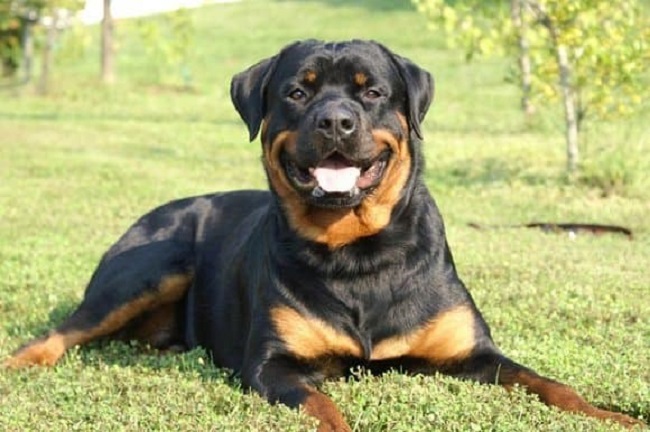The German Rottweiler, with its robust physique, noble temperament, and a reputation for being a reliable protector, is a breed that commands respect. Originating from Germany, this breed is recognized for its robust working abilities.
This guide explores the breed’s history, distinguishing characteristics, and care requirements, helping potential owners understand what makes a German Rottweiler truly unique.

The Origins of the German Rottweiler Breeds
The Rottweiler breed has a rich history dating back to the Roman Empire. They were initially used for herding livestock and pulling carts laden with butchered meat to markets.
Read Also:
The breed got its name from the town of Rottweil in Germany, where these dogs were commonplace.
Distinct Characteristics of the German Rottweiler
While there’s technically only one Rottweiler breed, distinctions have been made between German Rottweilers and American Rottweilers based on their physical attributes and temperaments.
Physical Attributes
German Rottweilers are often larger and more muscular than their American counterparts. A German Rottweiler has a broad head with a rounded forehead and well-defined stop.
They possess a robust, deep chest and strong, muscular body. Their coat is typically short, thick, and black with clear, rust-colored markings.
Temperament
Known for their courage and confidence, German Rottweilers are renowned for their guarding instincts. They’re intelligent, versatile, and trainable, with a strong desire to work.
However, they’re also known to be calm and good-natured family dogs when adequately trained and socialized.
German Rottweiler Care
Here are tips to care German Rottweiler:
Training and Exercise
Given their working origins, German Rottweilers require a lot of physical and mental stimulation. Regular exercise, obedience training, and even participation in dog sports like herding and tracking can help keep them healthy and content.
Health
German Rottweilers are generally healthy but can be prone to certain genetic conditions like hip dysplasia and heart conditions. Regular vet check-ups and a balanced diet are crucial for their wellbeing.
Grooming
Their short, dense coat is relatively low maintenance. However, they do shed moderately, so regular brushing can help manage this.
Understanding the German Rottweiler Breed Standard
The German Rottweiler has a specific breed standard, set by the Allgemeiner Deutscher Rottweiler Klub (ADRK), the German Rottweiler Club. According to ADRK, an ideal German Rottweiler should have a robust and powerful build, neither stocky nor lanky but certainly muscular.
Height and Weight
Male German Rottweilers should stand 24 to 27 inches tall at the shoulder and weigh between 95 to 135 pounds. Females are slightly smaller, standing 22 to 25 inches tall and weighing between 80 to 100 pounds.
Coat and Color
The coat of a German Rottweiler should be short, thick, and black with clearly defined rust to mahogany markings. The undercoat usually appears on the neck and thighs and its color should blend with the outer coat color.
German Rottweiler Temperament
German Rottweilers are known for their unwavering confidence and calm demeanor. They are courageous, not easily frightened, and are exceptionally devoted to their families. While they can be reserved towards strangers, a well-socialized Rottweiler is neither shy nor aggressive.
Lifespan and Health
German Rottweilers typically live between 8 to 10 years. They are generally healthy dogs but can be prone to certain health issues, such as hip and elbow dysplasia, heart conditions like aortic stenosis, and certain types of cancer.
Regular vet check-ups and early health screening can help identify and manage these issues.
Feeding and Diet
A German Rottweiler requires a balanced diet high in protein to maintain its muscular physique. While commercial dog foods can meet their nutritional needs, it’s essential to ensure they are high-quality and appropriate for the dog’s age, size, and activity level.
Training and Socialization
Training a German Rottweiler requires patience, consistency, and positive reinforcement methods. They are intelligent and eager to please, making them highly trainable.
Socialization from a young age is crucial to ensure they become well-adjusted, sociable adults.
Read Also:
Conclusion
German Rottweilers are a robust, intelligent, and versatile breed with a rich history and unique characteristics. Despite their formidable reputation, they’re loyal, protective, and can make excellent family pets when provided with proper training, care, and socialization.
























